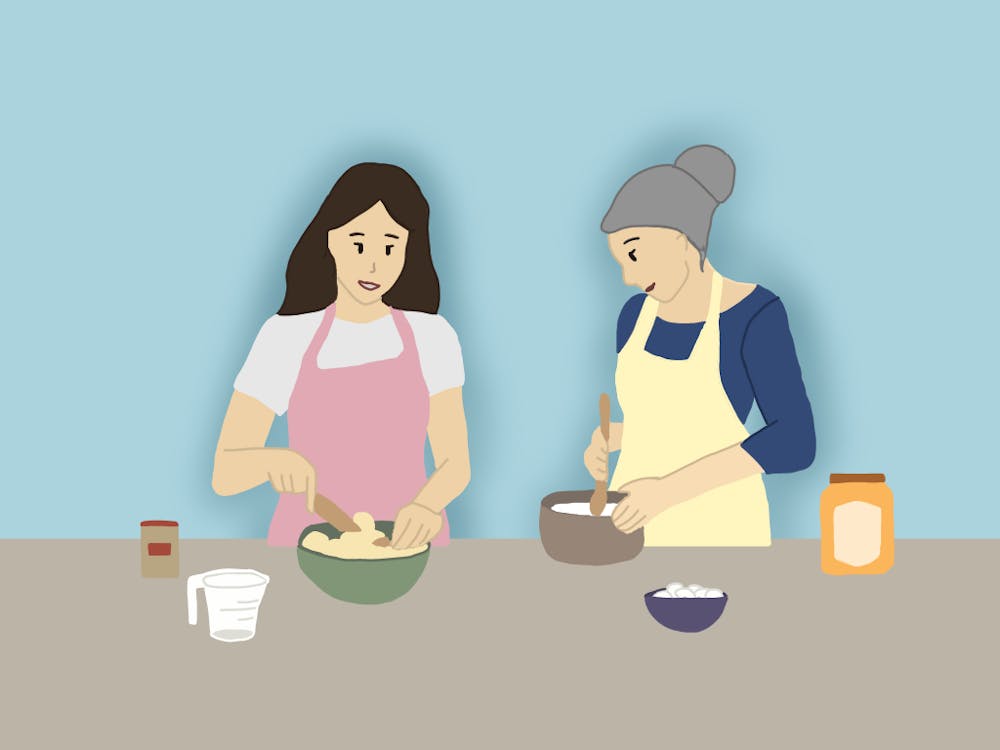I always thought I loved the hustle and bustle of the American lifestyle, but after experiencing the unhurried Spanish routine while studying abroad in Valencia this summer, I am rethinking my ways. As I readjust to life in Virginia, I find myself still living on Spanish time, reminiscing on the relaxed rhythm of Valencia that made me pause and soak up the present moment.
When I arrived in Valencia, I was ready for my new lifestyle — I was prepared to live with a host family, and I knew which two Spanish classes I would take. But what I didn’t expect were the changes that came with the Spanish pace. In the five weeks I was there, time seemed to flow differently. Mornings in a cafe would slip into quiet, drowsy afternoons. Chatter-filled dinners would stretch past the time I was used to, with conversations carrying on well into the evening.
It wasn’t that Spain simply moved at a slower pace — the Spanish lifestyle was filled with motion and energy. But people in Spain seemed to move with more grace and purpose, forgoing opportunities to multitask so they could focus on one activity at a time. I saw how parts of the city itself — from its waking hours to its physical layout — encouraged this deliberate lifestyle.
First, I became accustomed to the Spaniards’ sleep-wake cycle. Rather than attending school throughout the whole day, my classes ran from 8:30 a.m. to 12:45 p.m. My morning schedule followed a similar one to the locals’ workday, which typically runs from around 8:30 a.m. to 1:30 p.m. then again from around 4:30 p.m. to 8:30 p.m. This kind of schedule designated time in one’s day from 2:00 p.m. to 4:00 p.m. for a custom that I quickly came to love — siestas.
A period that typically follows lunch, the Spanish siesta allows for a break from daily obligations. In Valencia, this meant many shops closed for a few hours, and workers would rest or spend time with families or friends before returning to their jobs in the evening. I spent my siestas sitting down for lunch with my host mom and exchanging stories with her about our days.
Each moment felt like a luxury during these breaks. Compared to American culture, where I don’t often set aside time for simple enjoyments, I came to cherish my conversations with my host mom, my random meet-ups with my fellow students or teachers and, of course, the naps.
Along with the Spanish daily routine, the physical design of Valencia encouraged its inhabitants to lengthen the time spent with each other. Built on the banks of the dried-up Turia river, Valencia is a walkable, compact city. The city’s design makes it a hotspot for outdoor gatherings — I spotted locals walking, biking and stopping for a bite to eat on their way home. The scene in front of me felt widely different from the United States, where people seem to constantly run to and fro, only stopping to grab a bite to eat from one of the many drive-throughs that crop up every half-mile along the road.
I did not see a single drive-through the whole time I was in Valencia, and this was clearly by intention. For Spaniards, I realized, meals are not to be rushed but rather appreciated as a social gathering. When eating out, people in Spain take their time, especially when eating tapas — small plates typically ordered before the main course that elongate a meal and encourage people to share food and socialize with each other. My friends and I happily indulged in this custom. We spent hours in restaurants long after we had cleared our plates, our conversations only petering out whenever we realized we should probably ask our waiter for the check.
All of these characteristics of Valencia — the daily routine, the city’s layout and the social culture — made me realize that I do not have to wait for a certain time to do something I enjoy. The Spaniards don’t wait for the weekend to spend time with their friends — they simply visit their friends during a siesta that day or after work or school. They don’t rush each other through the end of a meal but instead enjoy each other’s company, encouraging each other to spend more time together.
I could try to measure my life in Spain through time — I could say I took a siesta every day, ate paella at least twice a week and watched weekly Euro Cup fútbol games. But life in Spain seemed to consist more of moments than of minutes. I celebrated among throngs of locals whenever we won a game, singing and dancing in the streets, watching fireworks light up the city center and chanting “¡Viva España!” for everyone to hear.
I shared stories about my family to my host mom, and she did the same to me, all while helping me practice my Spanish. As I walked to school every morning, I watched friends chat in a cafe. And, as I walked the same path later at night, I saw how the coffee and breakfast had been swapped with drinks and papas bravas.
Coming from the U.S., where too often I catch myself and others constantly striving towards the next big thing — an academic goal, a certain financial situation or some other unknown checkpoint in our future — Spain was a shocking reminder of the present. In Spain, I spent my days nurturing my relationships with others. I appreciated moments I normally would have rushed through at home, such as sitting down to have a cup of coffee or catching up with friends. Even though I’m back in the U.S., I’m still trying to live a little more like the Spanish, cherishing moments with people I love and enjoying life without a timer.







